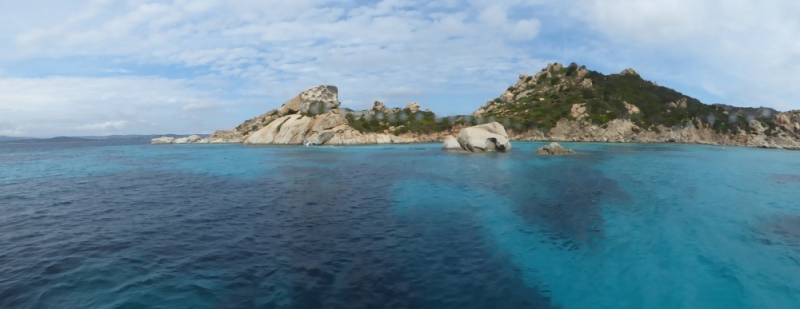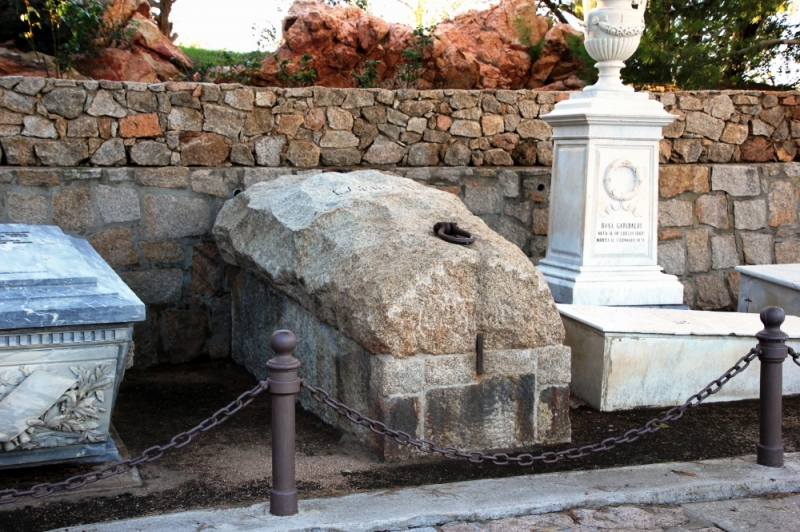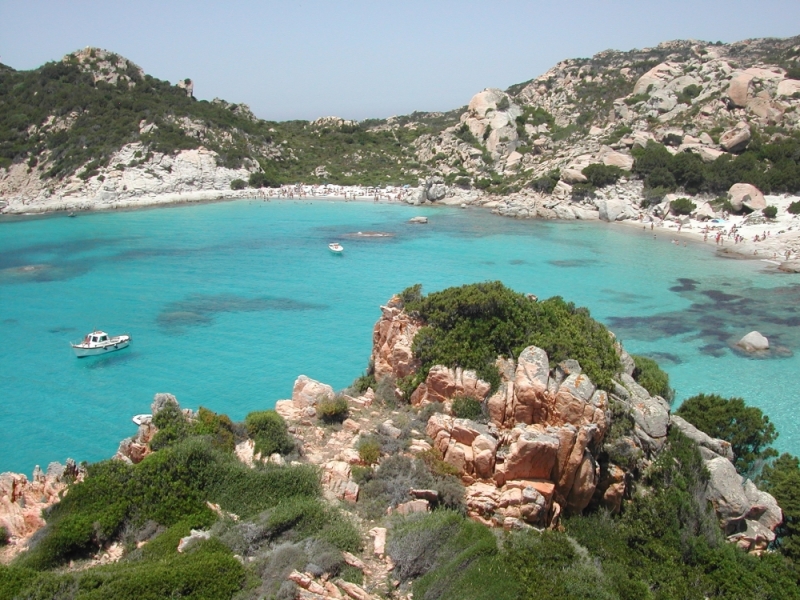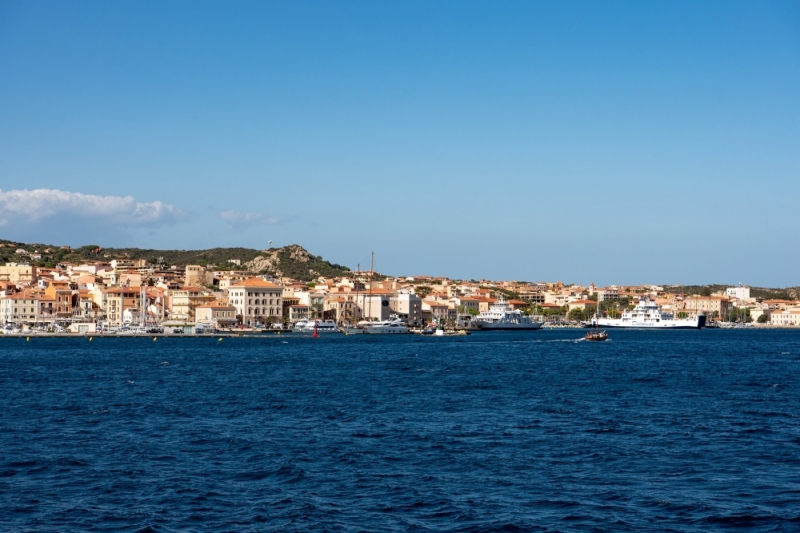The Archipelago overlooking the Emerald Coast
The La Maddalena Archipelago is made up of a group of islands located in the Tyrrhenian Sea, off the coast of the Costa Smeralda and is part of the province of Sassari, in Sardinia. The Archipelago is among the largest in Italian waters, as it is made up of seven major islands and approximately 60 islets, of which only 2 of the major islands are inhabited. The largest islands are La Maddalena, the largest, which also gives its name to the archipelago, then there are Caprera, famous for having hosted Garibaldi during his exile, Santo Stefano, Budelli, Santa Maria, Razzoli and Spargi. Some of the larger islets are Roma, Cala Lunga and Cardellino. All the islands with their 180 km of coastline, the beaches and the surrounding sea are part of the La Maddalena Archipelago National Park, in fact to be able to dive or even do sport fishing, as well as a whole other series of activities, it is necessary have permits issued by the body that manages the national park.
La Maddalena island
La Maddalena is the largest island in the Sardinian archipelago to which it also gives its name and is also the only inhabited island. Together with all the other islands that make up the archipelago, La Maddalena is part of the La Maddalena Archipelago National Park which is located within the marine area that constitutes the Cetacean Sanctuary. To get to the island you need to take one of the ferries that leave from Palau, the town that is located on the coast of Sardinia. When you arrive at La Maddalena you will be greeted by the intoxicating colors and scents of the wild and wonderful nature of this island. The ferry will dock at the port and along the narrow streets or stairways that start from this point, you will arrive in the real heart of the island and the town, Piazza Garibaldi . This square is full of shops and cafés, also the beating heart of the municipality of La Maddalena. In the square you will surely notice the Church of Santa Maria Maddalena where, inside, there is a crucifix that the famous Admiral Nelson gave as a sign of devotion in 1805, before the battle of Trafalgar. But the main attraction of the island is, without a shadow of a doubt, the Pink Beach in Cala di Roto. A beautiful beach, whose shore is made up of foraminifieri shells, that is, single-celled organisms that live in the leaves of Posidonia oceanica and that give the sand its characteristic pink color. It is forbidden to step on the sand and bathe, in fact the beach and the magnificent sea that bathe it can be visited only through the walkway that runs alongside the cove and by sea it can be reached within a certain limit established by the presence of buoys. Another beautiful beach to see is that of Bassa Trinità , in the bay of the same name in the north of the island. Apparently this is the largest beach on the island. Then there is Testa di Polpo , the beach that takes its name from the singular pink granite rock that dominates the bay and which recalls the head of an octopus. Here, the contrast between the pink granite rocks and the transparent sea offer spectacular plays of light. Another beach not to be missed is Cala Spalmatore which is located between two promontories that hide it from the winds, making the sea always very calm. In addition to the sea and the beaches, La Maddalena also contains beautiful paths, in the Punta Cannone area , in the midst of the Mediterranean vegetation, which you can go through to admire landscapes and wonderful views of the sea. For dolphin lovers, we recommend a visit to the Dolphin Research Center , where these wonderful cetaceans are monitored and studied. La Maddalena also has a certain historical relevance. In fact, at the end of the eighteenth century, the Sardinian fleet stationed in La Maddalena had to face Napoleon Bonaparte, at the time simple officer, who however led an army that wanted to invade the island but the Sardinians managed to prevent this from happening and driving away via Napoleone and his army. Linked to this historical episode are Forte San Vittorio , built on the highest point of the island and Forte Sant'Andrea which is instead located in the historic center. The latter was a battleground between the Sardinians and the French and it is precisely here that, once the island was liberated, the Sardinians hoisted the famous flag depicting Saint Mary Magdalene embracing a crucifix and the phrase "For God and for the King to win. or die. " Today this flag is preserved and can be visited in the Town Hall in Piazza Garibaldi.
Caprera
The island of Caprera is connected to La Maddalena through a bridge about 600 meters long, built in 1958, so that the approximately 80 inhabitants of the island, residing mainly in the village of Stagnali, can more easily get to La Maddalena which is the only major center of the archipelago. Caprera owes its fame to the fact that it was the home of Giuseppe Garibaldi, the hero of the two worlds, who chose this island as his last residence. Garibaldi, in fact, lived in Caprera for 20 years, until his death, having the famous "white house" built in the typical style of the South American fazendas and living just like a farmer, cultivating the fields and raising farmyard animals, such as chickens, sheep and equines. Today the white house is part of the Garibaldino Compendium , which gathers all the places where Garibaldi lived the last years of his life. In addition to the house it is possible to visit the stables, the mill, the oven, but also the first hut, where Garibaldi lived before the white house was built. In the Compendium there is also a small family cemetery where his tomb is kept: a large granite boulder engraved with his name. Since his death on June 2, 1882, for one hundred years, a Navy picket of honor has constantly guarded the general's grave. In addition to everything concerning Garibaldi, Caprera is also a wonderful island belonging to a completely protected nature reserve, in fact fishing is prohibited in Caprera. Cala Coticcio is called the Tahiti of Sardinia, one of the most beautiful beaches in Sardinia. Enclosed by rocks and Mediterranean scrub, Cala Coticcio is a beautiful beach of fine white sand with a wonderful sea, whose color ranges from emerald green to turquoise. Then there is Cala Portese , which is also called "of the two seas" because here the sea bathes both sides of the inlet, giving the impression of being between two seas. Then there is the wonderful Punta Rossa which is located a few steps from the Spiaggia del Relitto , where in addition to admiring the wonderful blue sea, the fine white beach, there is also the wreck of an ancient ship. Finally, Caprera is also famous for having the largest and oldest sailing center in Italy with the oldest sailing school in Italy. This center is also the only accommodation on the island for travelers.
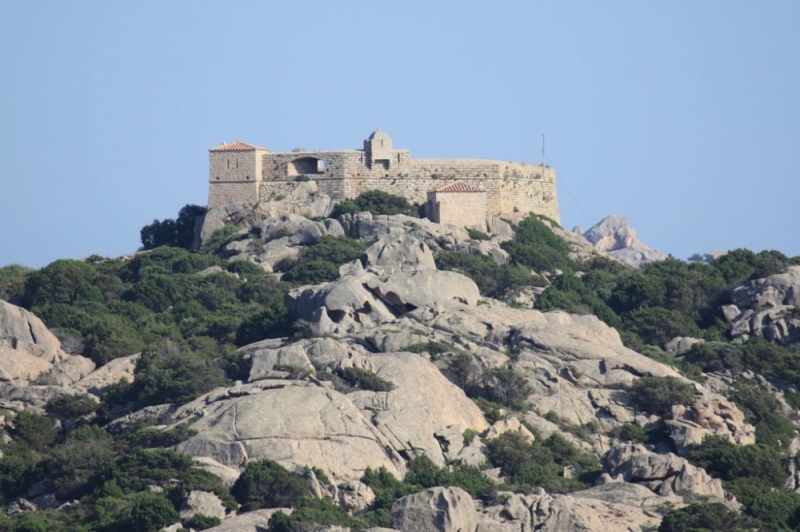
Forte di San Giorgio - Santo Stefano Island - https://web.archive.org/web/20161013065000/http://www.panoramio.com/photo/11459036
Santo Stefano Island
Until 2008, the island of Santo Stefano hosted a base of the American Navy, granted by the Italian Government to the Americans in 1972. Since the base was abandoned the island has been uninhabited. The other part of the island is inhabited only by tourists who are guests of the accommodation during the season. The island of Santo Stefano is the closest to the port of Palau, in fact it is located halfway between the port of the Sardinian city and the island of La Maddalena and in fact, due to its proximity to the island, it is precisely from Santo Stefano, exactly from Fort San Giorgio , which Napoleon bombed the forts of La Maddalena. Santo Stefano is rich in granite quarries, where man has lived since the Neolithic period. In one of these quarries, that of Villamarina , the bust of Costanzo Ciano, a fascist hierarch was found, whose statue was commissioned by Mussolini to complete the mausoleum built in Livorno, in his honor.
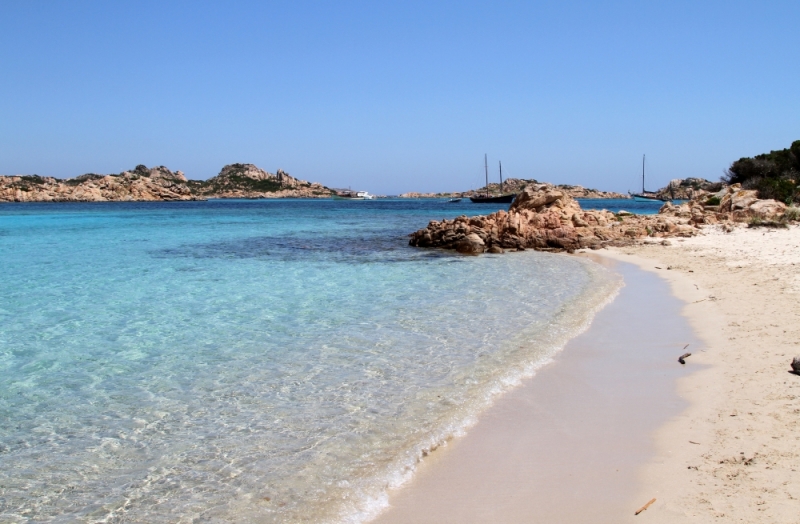
Cavaliere beach - Carlo Pelagalli https://web.archive.org/web/20161102234753/http://www.panoramio.com/photo/94636918
casings
Budelli is a privately owned island that is part of the La Maddalena Archipelago National Park and is inhabited by a single person, Mr. Morandi, keeper of the island. As it is a national reserve, protected by numerous environmental and landscape constraints, Budelli can only be admired from the sea, thanks to the organized tours that start from La Maddalena and other ports in Sardinia. In fact, in Budelli it is forbidden to anchor, disembark but also to bathe in the surrounding waters. Budelli is among the wildest islands of the archipelago and here too there are wonderful beaches such as the Cavaliere beach , with a fine white and thin sand and a turquoise, clear and transparent sea.
Santa Maria island
The Island of Santa Maria is located near the Bocche di Bonifacio and the Strait of the Asinelli separates it from the Island of Razzoli, while the Strangulated Pass separates it from La Presa. As well as La Maddalena and Caprera, Santa Maria is also inhabited by some descendants of the Bertoleoni family, a family of Genoese origin who settled on the island at the end of the 18th century. Even before the Bertoleons, Benedictine monks settled there but left the monastery in the 16th century. A church dedicated to the Madonna was annexed to the monastery and it was the church that gave the island its name. Even one of the most beautiful beaches on the island is named after the Virgin, in fact it is called Cala Santa Maria and it is a beautiful beach with fine white sand.
Razzoli
Razzoli is the last island of the Archipelago of La Maddalena before it reaches Corsican territory from Sardinia. Razzoli is completely uninhabited and it is possible to visit it thanks to organized excursions that start from La Maddalena. Razzoli has high and jagged coasts and its cliffs dominate the turquoise sea that surrounds the island and being completely uninhabited it is also the wildest of all the islands and islets that make up the archipelago. There are many beaches accessible only by sea, such as Cala Noce and Cala Lunga or there is Cala Bove Marino which was the refuge of the monk seal. During your excursions to Razzoli, do not forget to bring your mask and fins with you, as you can snorkel while admiring wonderful seabed and spectacular marine life.
break
Like Razzoli, Spargi is also uninhabited and wild and is flanked by an islet and a rock, called younger brothers, which are Spargiotto and Spargiottello. The backdrops of Spargi are truly wonderful and among the most beautiful things to see are certainly the Secca di Washington and the Wreck of a Roman ship located off Punta Zanotto . To reach Spargi you can take advantage of the organized tours that start from La Maddalena, Palau and Santa Teresa di Gallura. With these tours you will make the complete tour of the island and you will have the opportunity to dive into the crystal clear waters of Cala Soraya or Cala Granara which are located in the southern part of the island. While noteworthy, in the northern part of Spargi, are Cala Pietranera and Cala Piscioli , with wonderful cliffs that look like works of art.
Movida and entertainment
La Maddalena offers a quiet but very chic and elegant nightlife. In fact there are many lounge bars where you can enjoy excellent aperitifs but also where you can dine. Among the many names there are certainly the famous The Duke and the Charlie Bar. For those who love life on the boat, we recommend the Leone di Caprera, a boat that organizes dinners and lunches on board, during wonderful excursions in the archipelago. The only disco in La Maddalena, open both in summer and in winter, is the Bulldog which organizes wonderful events with national and international guests. In addition, for those who want, there are night ferries that will take you beyond the sea to the Costa Smeralda, famous for its lively nightlife. For the rest, there are romantic restaurants on the sea, diving centers and for dolphin watching.
Climate, curiosity and advice
Climate: The Archipelago has a typically Mediterranean climate, in fact the winters are mild and the summers warm, with little rainfall as the winds that blow on the archipelago always keep the sky clean. However, despite the climate, our advice is to still visit the archipelago during the summer months, since it is from May to September that you can enjoy all the activities on the islands.
Curiosity: The archipelago has been used several times as a set of some films. For example, in 1964 the great Italian director Michelangelo Antonioni shot some scenes from the film Il Deserto Rosso, with Monica Vitti.
Tips: We suggest you organize in advance all the tours you want to do during your holiday in La Maddalena, as once on the spot, given the turnout during the summer season, it will be more difficult to find the times and days that will be most convenient for you. Always remember to bring a mask and snorkel for your snorkeling.


